The release of Assassin's Creed III Remastered in 2019 was a reminder that what now feels familiar was once revolutionary. When it first arrived in 2012, Assassin's Creed III was a true free-roaming epic, opening up a whole wilderness of exploration and free movement that laid the groundwork for the open-range, action-RPG structure of Assassin's Creed Origins and Odyssey.
To find out more about how Assassin's Creed III (and Assassin's Creed III Liberation, which was also included in Assassin’s Creed III Remastered) took shape, we spoke with four developers who worked on the original games, and asked them what it was like to bring the colonial-era adventures of Connor and Aveline to life.
American Assassin
Assassin's Creed III began with a straightforward idea: Bring Assassin's Creed to America.
"I know [Creative Director] Alex [Hutchinson] really wanted to have something in the Americas, just to have something different than Europe," says Philippe Bergeron, senior level design director at Ubisoft Montreal. Bergeron has worked on the Assassin's Creed franchise since the very beginning, when the first game was in development as a then-next-gen Prince of Persia title. When work on Assassin's Creed III began, he was a level-design director at Ubisoft Singapore, but moved to Montreal to become the game's mission director.
"Up until Assassin's Creed III, all of the Assassin's Creeds were set in cities," Bergeron says. "We didn't really have any form of wilderness; we had some in AC1, like with the Kingdom map, which was mainly just traveling around on a horse. We had some in ACII, with Monteriggioni and the mountainside, but those were fairly light in exploration. When we were talking about ACIII, there's a huge component of it, the Frontier, which is just pure organic vegetation. The implication of having tree-running and whatnot – I was surprised our engine could even do that."
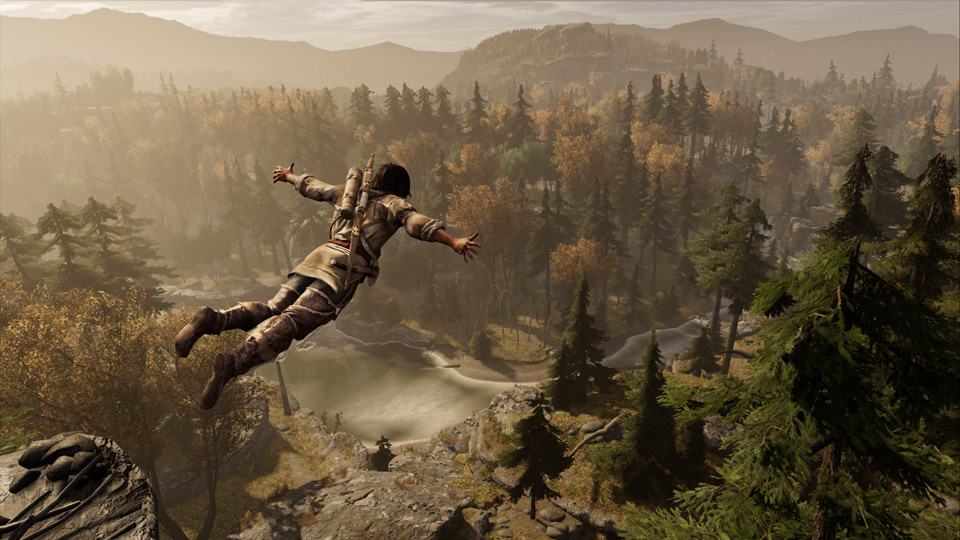
Rendered in Miniature
Before Assassin's Creed III could really take shape as a game, however, the game's core team needed to communicate their sweeping ideas – the American Revolution, free-running in a wild frontier, the new world as a fresh battleground for the ancient Assassins and Templars – to the wider group of developers who would be working on the project. They also needed to communicate what the setting was going to be, and Alexandre Neszvecsko – now a narrative and realization director at Ubisoft Montreal – had a unique idea for how to present it to management and the development teams.
Like Bergeron, Neszvecsko had worked on the Assassin's Creed franchise since the first game, creating cinematics that included "the first, first, first" teaser for it, which showed the inner workings of Altair's Hidden Blade. On Assassin's Creed III, his main role was to communicate with development teams about the intent of the game, and how certain in-game scenes should be populated, presented, and directed. Before that, however, he was tasked with creating a context video that would clearly present the game's setting. Initially, he says, the idea was to create something with storyboards – but that didn't feel quite right.
"I realized that – from that period of history in the United States – there are very few art pieces," Neszvecsko says. "The original idea of going through art pieces, or a drawing or something, felt unnatural to me. But when you go into a museum, what covers those moments is models. They do big reproductions, so I [pitched the idea of using] miniatures and models. I constructed the whole region, part of the port of Philadelphia and Boston, all in models, and I filmed it."
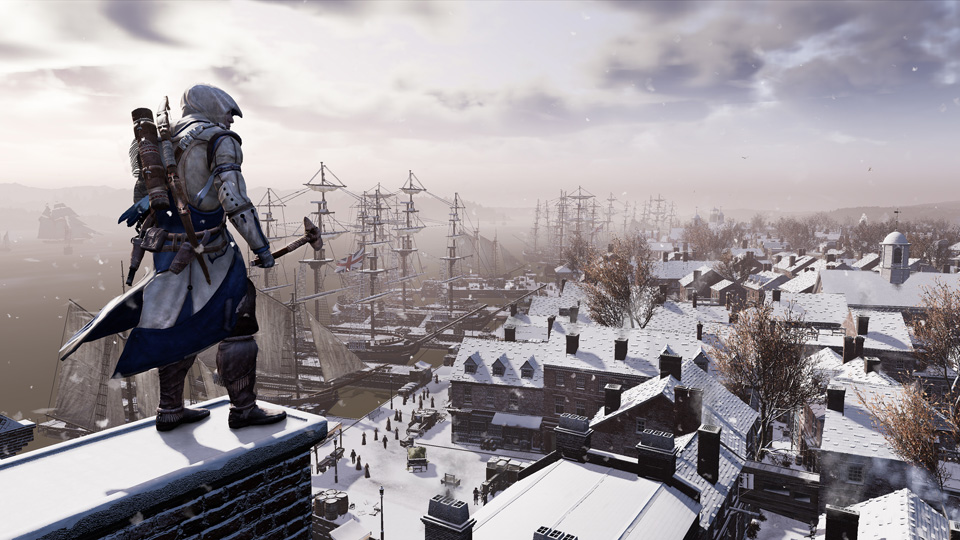
The only problem was that Ubisoft didn't have a department that created models. "I almost created my own trap," Neszvecsko says. To pull it off, he began building a team "with very strange talents" outside of making games. One team member, for example, worked as a lighting artist on cinematics and trailers at Ubisoft Montreal; she joined Neszvecsko's team with the idea of using her skills as a pastry chef to build walls and brickwork the way she would her cakes.
"I built my team with all those crazy people that were doing a job at Ubisoft, but had side projects in their lives that were super different, but fit what we were trying to do," Neszvecsko says. "And for, let's say, almost a week, we were struggling to find the right way to do our stuff. We had to find a way to do the thing right – how to do a wooden wall, how to do a brick wall – and we built the houses and everything."
Neszvecsko estimates the building took about three weeks – including two days of filming, during which the team used skateboards to capture some of the shots – and then another three weeks to integrate the characters, which were modeled in 3D, but made to look like lead miniatures. The result was a video that presented Assassin's Creed III's historical background, which is included as a special feature in the gallery for Assassin's Creed III Remastered.
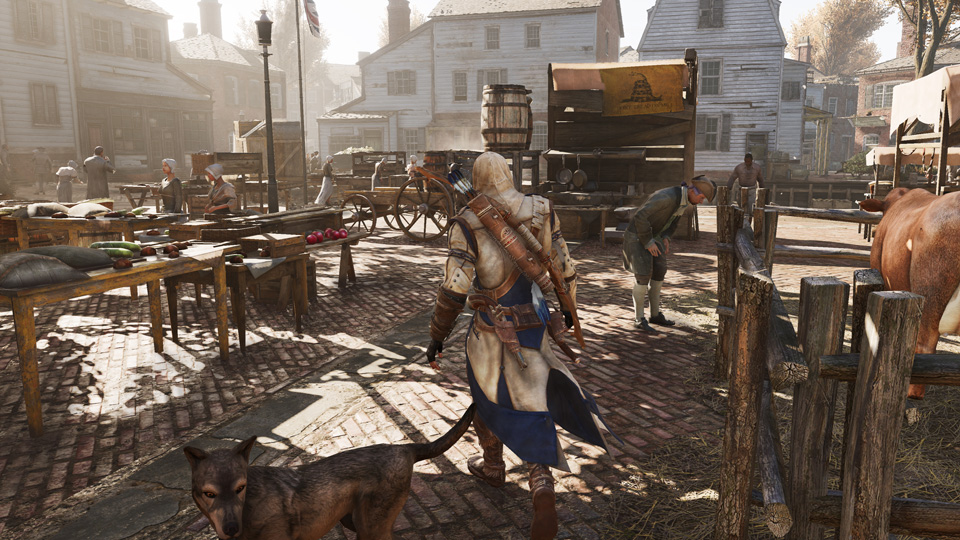
"It was a huge success internally," says Neszvecsko. "It was unique, and we had all the teams coming up to take a look at what we'd done. We had houses rebuilt, and part of a city rebuilt in models, and they could, for the first time, see something [concrete]."
From City to Frontier
"I remember, right after their kickoff meeting, they regrouped all of the leads from [Assassin's Creed] Brotherhood, and they gave us a presentation of the next setting for Assassin's Creed," says Julien Laferriere, now a producer at Ubisoft Montreal. "They presented this Assassin's Creed in the context of the American Revolution, with ambitions of bringing the Assassin into the forest, and for the first time having some snow, and some hunting, and playing this Native American Assassin within this context. I thought it was super-exciting. I think that was maybe somewhere around August 2010. It was definitely the project I wanted to join at that time."
When he first saw Assassin's Creed III, Laferriere – who started with the franchise by overseeing the UI, menus, and visual effects for Assassin's Creed II – was working on his first project as associate producer, The Da Vinci Disappearance DLC for Assassin's Creed Brotherhood. In actuality, he was being prepared for an associate producer role on Assassin's Creed III, which he began in winter of 2011, overseeing the creation of roughly half the game. This meant Laferriere was in charge of game design, missions, and technology, including the engine and tools used to build the game.
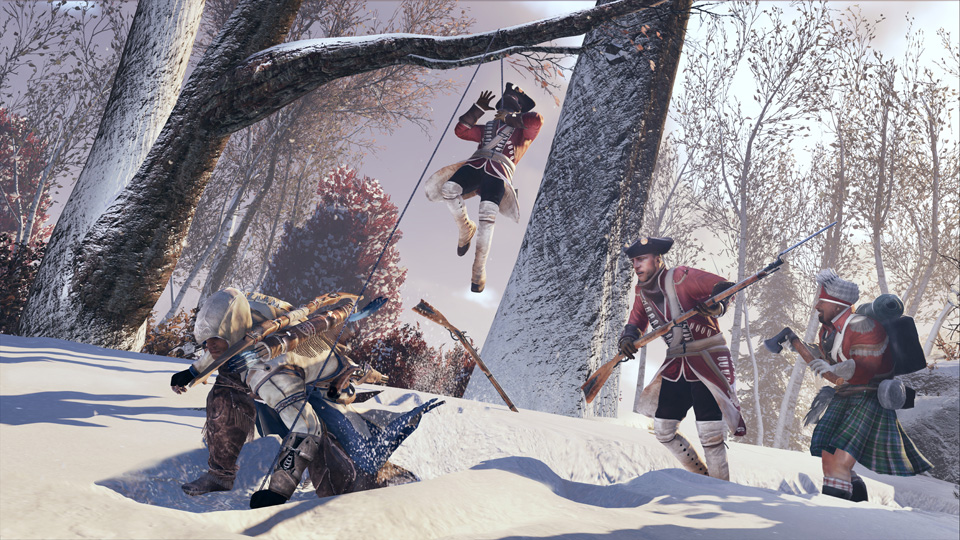
"My teams were in charge of designing the capabilities of the hero," says Laferriere. "So I saw the first prototypes of what we called ‘tree-running' – basically parkour with trees, which was super new at that time. The traversal abilities of the hero were very well known in the cities, but how do you transpose that with more organic ingredients, like tree stumps and rocks and branches and so on? The first prototypes of that were really amazing."
The Frontier setting lent itself to new gameplay opportunities beyond tree-running. "Stalking zones," which let Connor crouch down in dense vegetation to stay unseen, were developed as a way to stay stealthy in areas where there were few hiding places or civilians to blend in with. The tree canopy itself was an exciting possibility as well, letting players stalk enemies from above and dramatically hang them with a rope dart. With the landscape itself as his tool, it was possible for Connor to emerge from hiding, strike hard, and fade away again after giving his enemies the slip, something that made stealth more accessible to more players.
"We were getting to a point [in previous games] where for most players, the path of least resistance was fighting," says Bergeron. "And we asked ourselves, why is that? Why is it easier to fight? It wasn't because the enemies were too easy; it was mainly because it was hard to come back to a stealth moment. So if you tried to do a stealth approach and you got into combat, it was really hard to then go back into hiding. And once we had that realization, we doubled down on having smoke bombs, having stalking zones, having more hide spot opportunities, to make it easier to come back to an anonymous state."
In addition to expanding possibilities for stealth, the team also amped up the combat options. With a wide assortment of muskets, swords, tomahawks, and other death-dealing tools at his disposal, Connor's abilities in a fight were a cut above what previous Assassins could do. His flexibility in combat let him dispatch foes in unorthodox ways, fluidly switching between melee weapons and gadgets mid-fight, and instantly killing two enemies at once if they dared attack him at the same time.
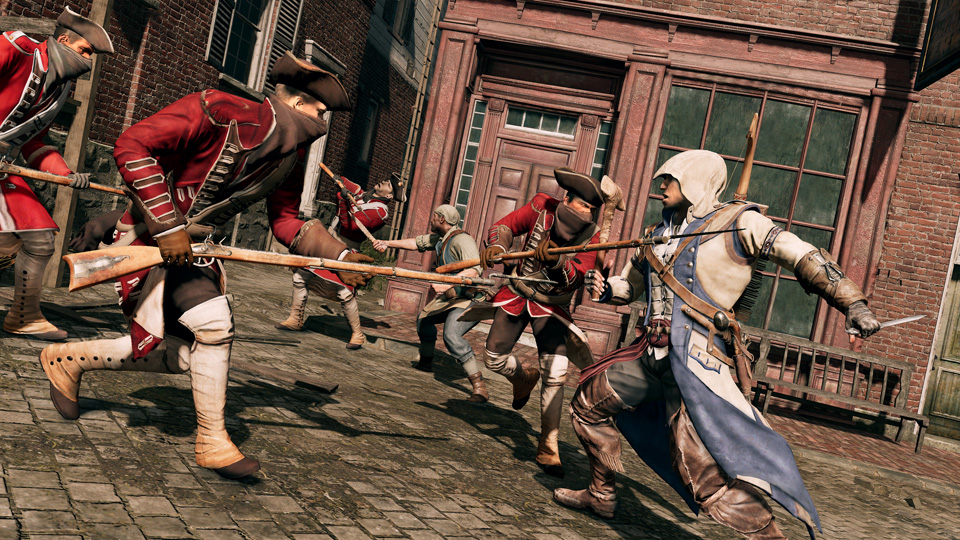
"Our goal with that was to give as many possibilities to the player as we could," Laferriere says. "I remember having very clear design discussions on how can we use any tools at the player's disposal to create something interesting. Using the snare is one of them; your rope dart weapon is another, and the double kills with the tomahawk, and so on. It was mixing game-design possibilities with cinematic flair. That was the direction we wanted to take, and our goal was to reward the player for being creative. A lot of love was put into making sure it was a fairly broad approach to fighting."
Remaking History
When Laferriere's work began, Connor's central traits were already clearly outlined. The new hero would stand in stark contrast with the flashier Ezio Auditore, representing a return to the more taciturn, stoic template established by Altair. He'd be an 18th century Native American Assassin, an expert in guerrilla warfare with excellent tracking and hunting skills, but with an internal conflict stemming from his mixed English and Native American parentage, and his own uncertainty about his place in the world.
"It's a character that felt like the time period, where it's Englishmen fighting Englishmen over political ambitions, and there is this split that was trying to be embodied in this character," says Laferriere. The development of Connor's character and abilities was also driven by another split, between the desire to surprise the audience, and the need to preserve key pieces of Assassin's Creed DNA. Laferriere remembers discussions focused on how to keep in the hood and Hidden Blade, for example, or whether players should still hear an eagle when performing a Leap of Faith. Haystacks were too important not to keep in, but were improved with the introduction of moving haycarts.
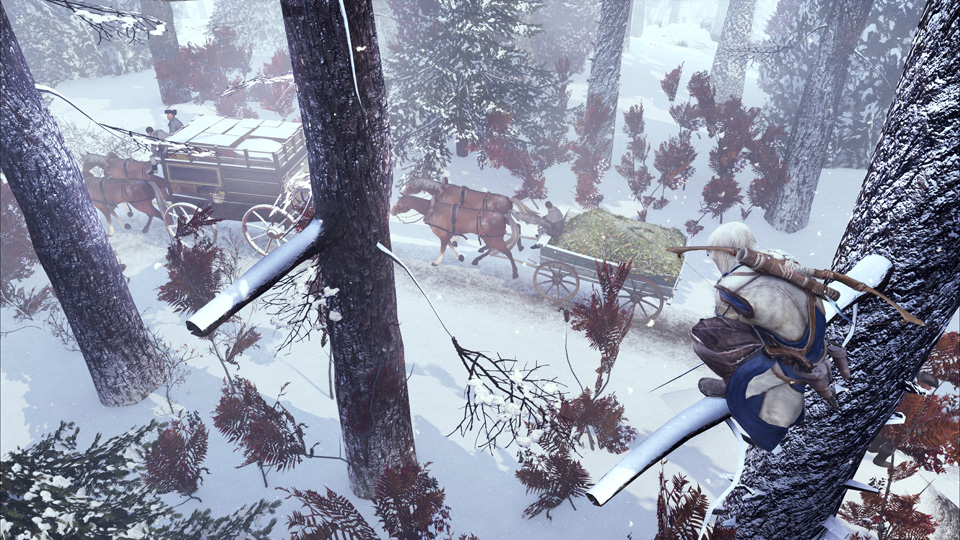
When it came to choosing which events and historical figures to include, the developers had plenty of raw material to draw from, thanks to the American Revolution being such a heavily documented period. The team's in-house historian, Maxime Durand, had just completed a Master's degree in revolutionary history, making him an invaluable resource. The developers were also able to consult with weaponsmiths and re-enactors, at one point traveling to New England to record the sounds of actual cannons and muskets from the 18th century.
"We were happy to say, at that time, that it's probably one of the few settings we could make where our characters were on bills, like dollar bills," Laferriere says. "These were the obvious ones – George Washington had to be in, Ben Franklin had to be in. So we kind of picked the usual suspects, and it was more about how we have these characters, and these moments of history, be part of our lore, and what role these guys would play in a centuries-old conflict between Assassins and Templars."
There was one role that Ben Franklin wouldn't play, however: Connor's gadget-master. While the idea was openly joked about before launch, the developers decided it would be too obvious, especially after Leonardo Da Vinci had taken a similar role in Ezio's games. Instead, Laferriere says, they wanted to keep players guessing.
"We said, ‘let's try to surprise fans in any way we can, with some curveballs we could throw at them while respecting the fundamentals of the lore,'" Laferriere says. "We tried to have little winks at what players were expecting, but always with a little twist of surprise whenever we could."
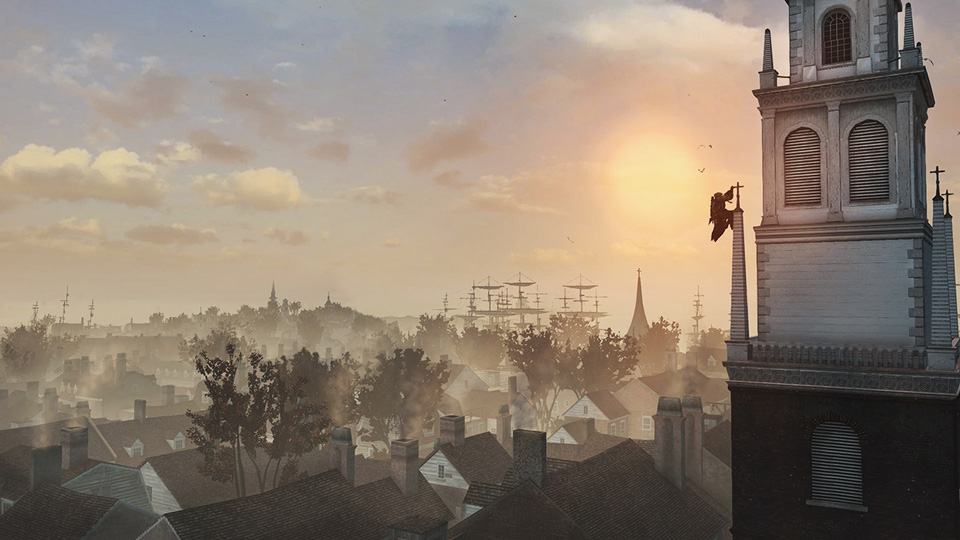
One of Assassin's Creed III's biggest such surprises was Haytham Kenway, Connor's father and the unexpected protagonist of the game's first few hours. Haytham was a deliberate fake-out designed to keep players guessing – and to give them more than they'd expected.
"We thought it'd be really cool if in all the marketing we do for the game, we present this Connor character, and that's all that people get to see," says Bergeron. "And we never communicate at all about this other character, and when people start playing it, then oh my God, they're like ‘who is this other character?' There's a lot of worth in what you communicate about the game – but then also in a player actually buying your game, and getting home, and getting more than what they thought they were getting."
A Parallel Project
One of the developers who worked on Assassin's Creed III joined the team for only three months, with no intention of seeing the project through to the end. This was Mikhail Lozanov, now a creative director at Ubisoft Sofia. Lozanov had come aboard to learn how Assassin's Creed III was being made; once his three-month crash course was completed, he took that training back to Bulgaria to help create Assassin's Creed III Liberation as its gameplay technical director, eventually taking over for the game's creative director after the latter left the project.
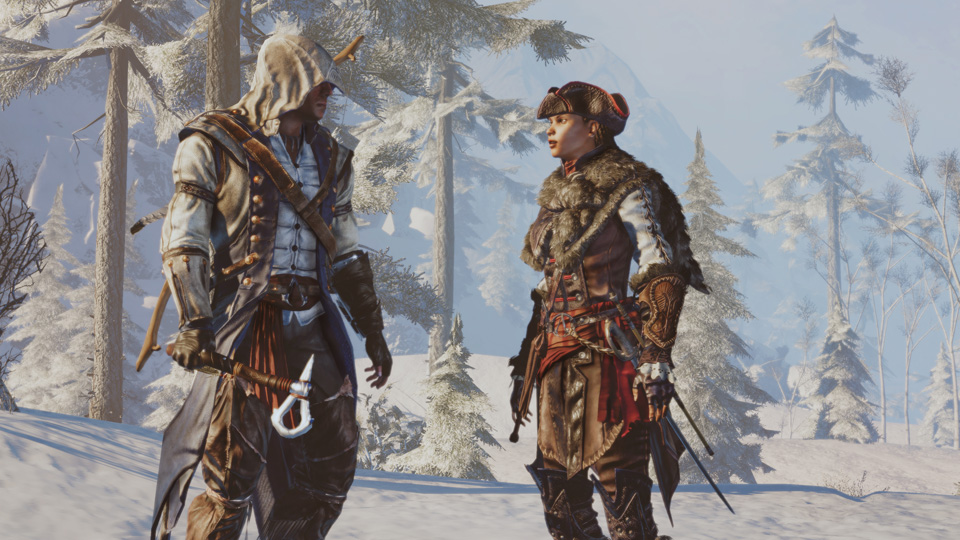
When work on Liberation began in 2010, Ubisoft Sofia had built a reputation as a studio unafraid to try new things, capable of working with different properties and platforms. When the studio was first approached to create an Assassin's Creed for the then-unannounced PlayStation Vita, Lozanov says, the initial idea was to directly port Assassin's Creed III to the handheld. However, the limitations of the platform – along with the prospect of Ubisoft Sofia's work being dependent on the parallel development being done in Montreal – made the studio decide to take another direction.
"Initially, we wanted London, because we were a bit reckless, and it was our first Assassin," Lozanov says. "We weren't aware it was planned for a bit later for Assassin's Creed Syndicate. So we set on something similar, and close to the period of Assassin's Creed III, but with another protagonist. ... We wanted to explore this, because the DNA of the brand is to explore history, to see history from different points of view, to sneak in between the pages where nobody wrote anything."
When it launched in 2012, Liberation used the same AnvilNext engine that powered Assassin's Creed III – but the first demo that Ubisoft Sofia sent to Montreal was built using the same engine as Assassin's Creed Brotherhood, which was more optimized and stable at the time, Lozanov says. The demo – which showed a character free-running across terrain – was met with disbelief.
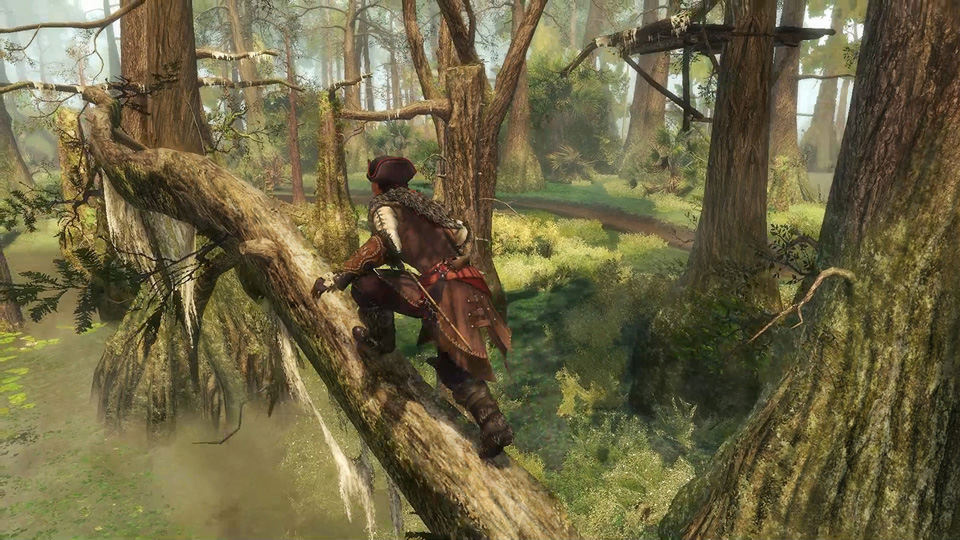
"They didn't believe it was possible to make this work [in the Brotherhood engine]," Lozanov says. "Our engineers here did an amazing job to make it work."
Liberation's design was influenced by the Vita itself, with gameplay elements tailored to the handheld's unique features. Players could row a canoe by swiping along the back touchpad, for example, or read secret messages by holding the Vita's camera up to a light. But the Vita had another, longer-lasting effect on the series: it was part of the reason Abstergo got into the entertainment business. Liberation's take on the modern-day storyline re-imagined the past-exploring Animus as a consumer device – one invaded by the hacker group Erudito, who appeared periodically to show players the true versions of Abstergo-edited scenes. (Lozanov, a former hacker himself, helped bring authenticity to the UI during these scenes.)
"Because of the form factor of Vita, it felt like a small video player... it changed how people would perceive the Animus, for Vita especially," says Lozanov. "If you can imagine the meta[-story], that this is like a video player, and you buy a piece of entertainment – that's why we felt that we needed to address this, and to immerse players, because for Assassin's Creed, the present day was a very big part of what the game is. So we had to adapt to, let's call it the new Animus."
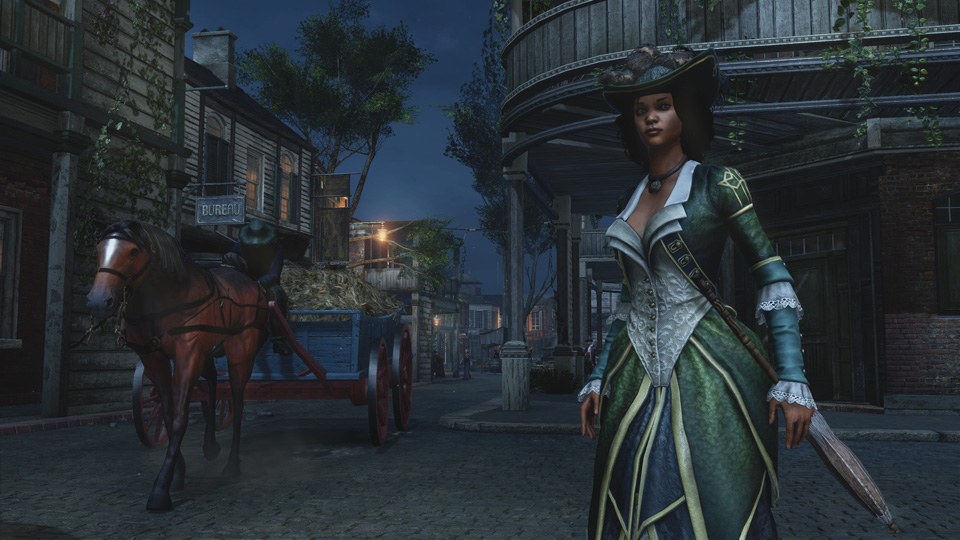
Technical Challenges
Back in Montreal, the present-day storyline was something Bergeron was working to broaden for Assassin's Creed III.
"I had a pet project, which was giving a little more screen time to Desmond," Bergeron says. "So I wanted to have, specifically, like three to four present-day missions. That's where those missions came out of: my bullheadedness to keep those in the game."
Some missions were more difficult to keep in. Bergeron says The Midnight Ride – a mission in which Paul Revere rides behind Connor as the two sneak past Redcoat patrols in an effort to warn colonists of approaching British forces – was "constantly under threat" of being cut. One of the team's goals was to portray the ride in a way that was true to history, instead of to the event's endless romanticized retellings – which turned out harder than expected.
"That's the Assassin's way, right?" says Bergeron. "We try to be like teachers, in a way; we'll read about a period, and when we see things that are very commonly misunderstood or portrayed incorrectly, then we give ourselves the responsibility to portray that slightly more accurately. So reading the Paul Revere retellings, it was so wild, all over the map. A lot of academics lean toward [the idea that] he himself did not do this; it was more of a group effort to do it. That was one of the reasons to tone down the setup a little bit. And then there's a technical reason for it, where we were missing a lot of technology just to have two people on horses going around. It was a monumental effort of hacking to just have that even happen. We had one mission designer in his corner, basically bending over backwards to make that happen."
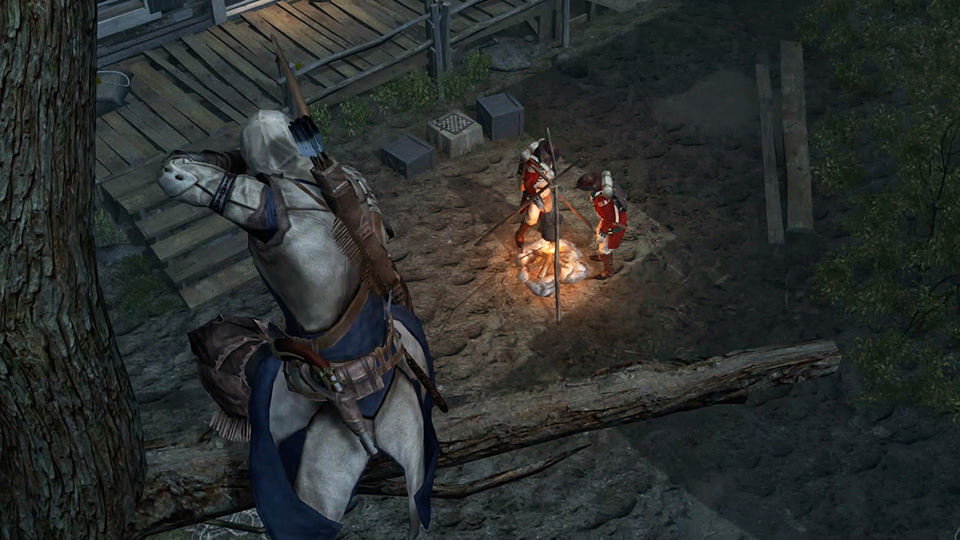
Another potential issue was in how to re-create massive, army-scale battles, like the kind that erupted during the Battle of Bunker Hill, or the Battles of Lexington and Concord. Rather than trying to portray the full sweep of these moments, the game narrows the player's focus.
When the setting was first revealed, Bergeron says, "I was already starting to come up with forms of trickery we could use to give the impression of being part of a massive battle where everybody's just fighting to survive, but then focusing on the player's point of view within that. ... We always try to have that impression that you're part of this bigger thing, but you're seeing it from your point of view. So you don't necessarily need to see all of what's happening, but because you're hearing it, and you're sort of feeling it, it feels much bigger than what you're living."
One potentially daunting problem, says Bergeron, was how to realize the game's naval battles, which were tackled entirely by Ubisoft Singapore. At the time, the game world needed to be static in order for characters to move around in it; a ship, meanwhile, was a big roving platform that needed to be dynamic in order to move with the ocean in a believable way – but also needed to be bustling with NPCs.
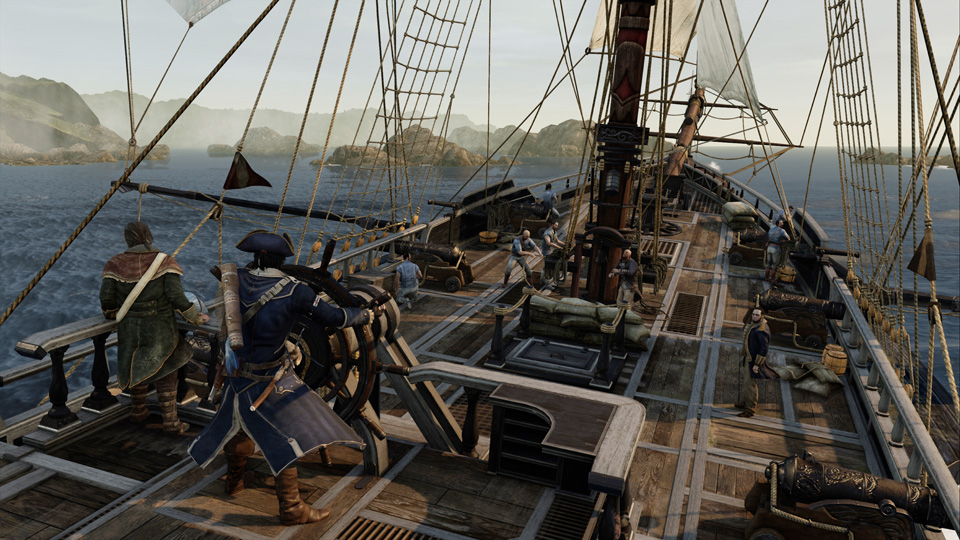
"Initially, we were all afraid," says Bergeron. "What is it going to be? Can we actually pull this off? But then they made it happen, which opened the gate for multiple other things later on. Having mobile platforms, having moving geometry – that's how we got windmills, for instance, which weren't possible to do before that. So it opened up many, many new features in other Assassin's Creeds to come after."
Looking Back
"At the time, Assassin's Creed III was a project of epic proportions," says Laferriere when asked what he's most proud of, adding that the game set a benchmark for size and ambition. "For me, it's the first time we saw what a forest and a natural environment could be in Assassin's Creed. And it's something that I remember being like, ‘AC is only in cities! You're a guy who does parkour and is into political intrigue, and stabs people in the back in dark alleys. How is that even possible?' And when we saw that beautiful forest brought to life, and all these capabilities of the player inside it, it was just really amazing, and even to this day I still have amazing memories of the Frontier."
Bergeron, meanwhile, remains proud that the modern-day missions – which took Desmond to New York, Brazil, and the Abstergo lab where he'd been held captive in the first game – stayed in until the end.
"In general, I'm super-proud of our mission-design team," he adds. "We had a lot of fun making this, and I think the work showed in the end. Pushing for all those massive battle moments, developing the naval system with the Singapore guys – which is now almost a new staple of Assassin's Creed – those are all good moments for me."
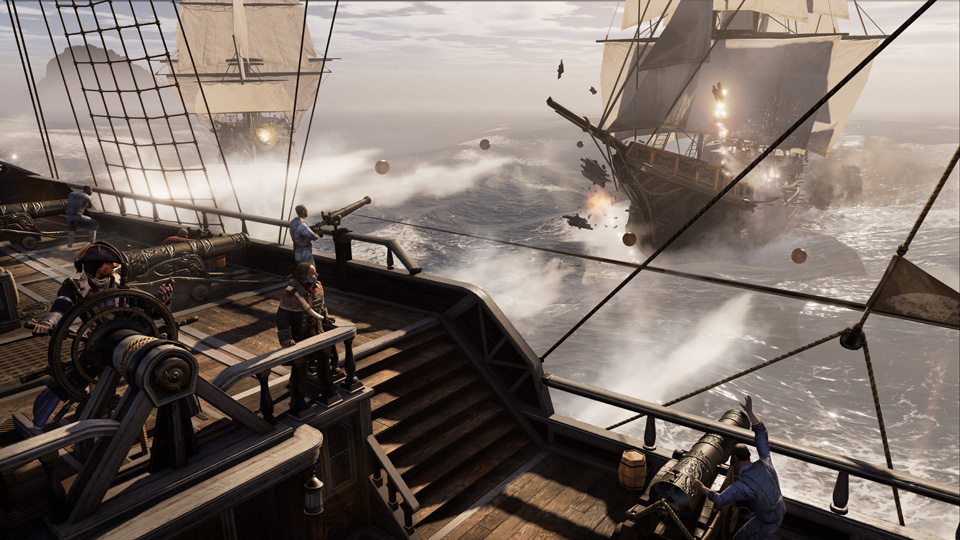
"We went to Gamescom, and we were wearing T-shirts of Assassin's Creed Liberation," says Lozanov. "Our group was walking toward the hall where the demo pods were one morning," he says. "Behind us, there were a group of German kids, and they were whispering, ‘Assassin's Creed, Assassin's Creed!' We felt like rockstars. We were super-proud of what we achieved. Nobody was expecting such a thing on the small console."
Other than the game and Aveline herself, there's something else Lozanov is proud of: "There is only one cat in the whole game. Nobody has managed to find it so far." Pressed for more, all he'd tell us was, "It's in New Orleans, and likes fish."
Assassin's Creed III Remastered is available now for Xbox One, PS4, and PC. For more on Assassin's Creed, check out our previous coverage.



